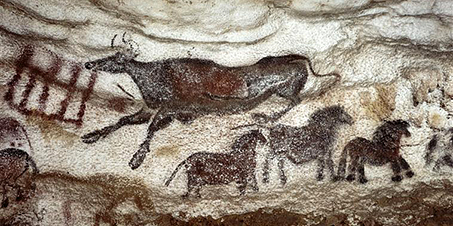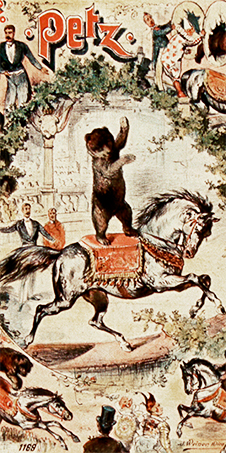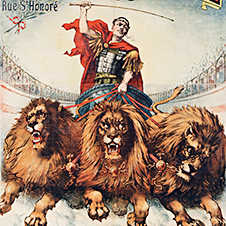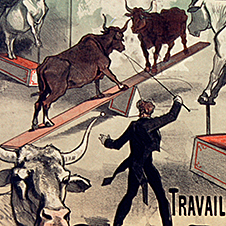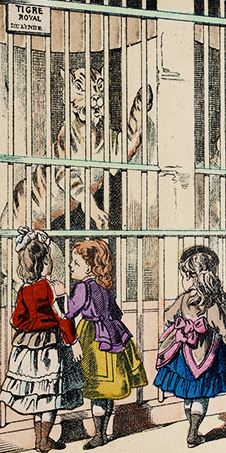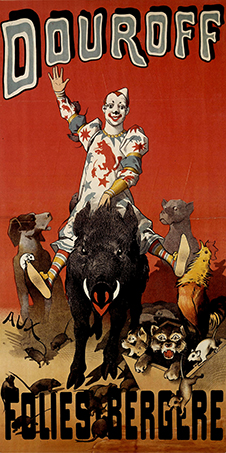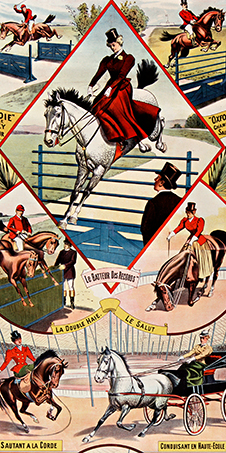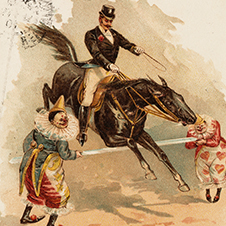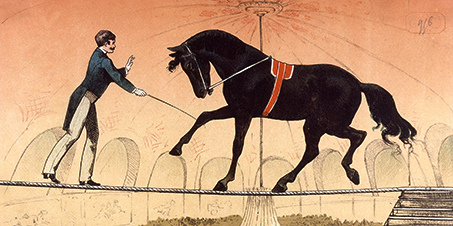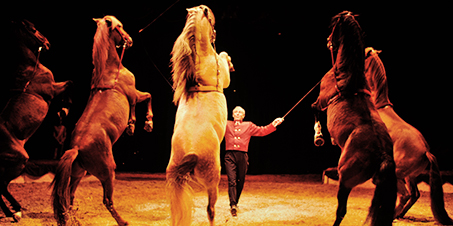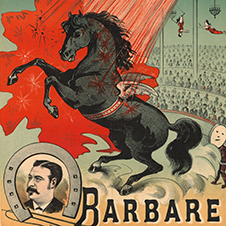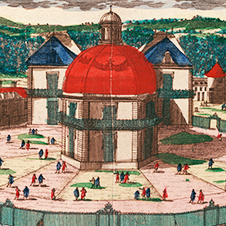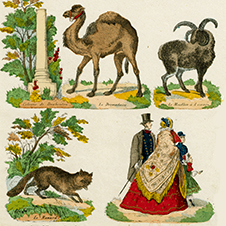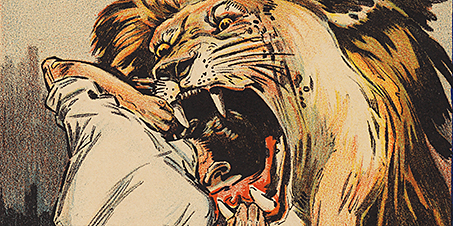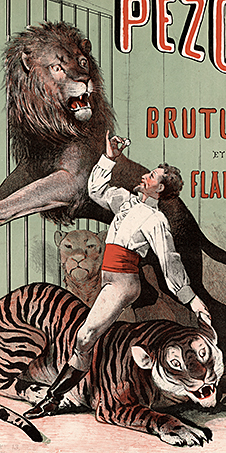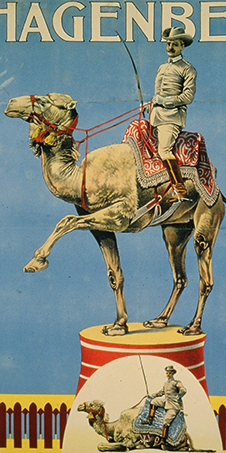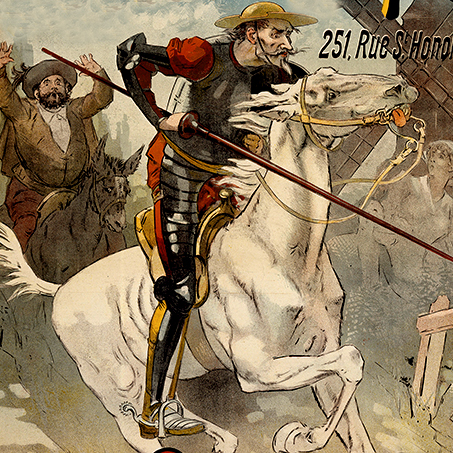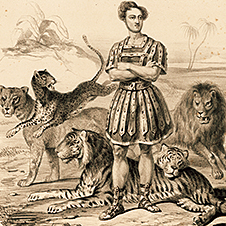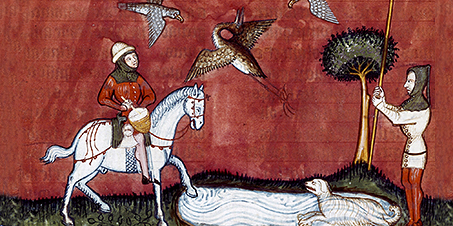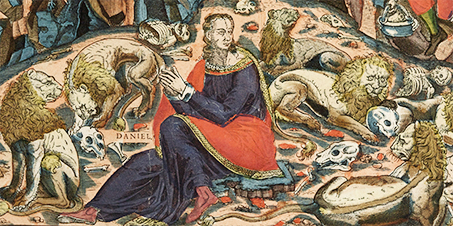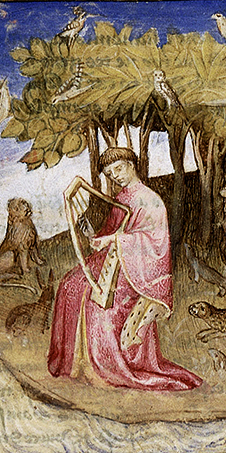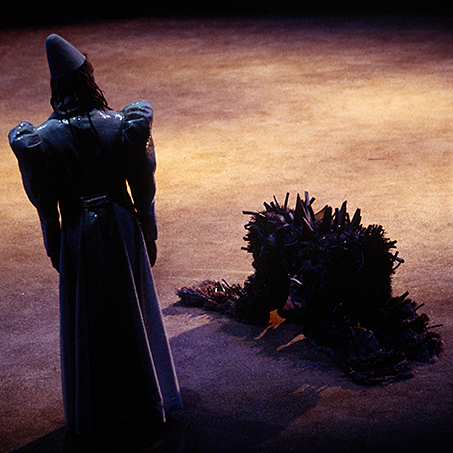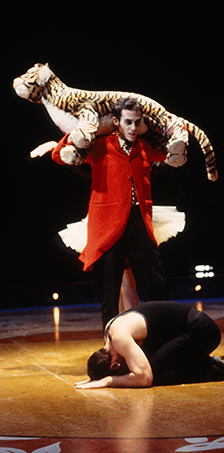Partners
If the horse is the first partner of the pioneers of modern circus, very quickly donkeys, goats, dogs, pigs, rats and domestic backyard birds join forces with the entertainers to compose small parodic skits where they demonstrate their ability to learn in terms of balance, jumps or flexibility. These harmless animals will be the first partners of the clowns.
Mounted horses
Academic equitation was not born with the circus, but its inclusion in the ring, notably at the initiative of Laurent Franconi and François Baucher, quickly propelled it to the rank of the major disciplines of the equestrian repertoire. Qualified as haute école, a pretext for multiple variations in music and costumes, this other form of virtuosity becomes a discipline in its own right.
Menageries
The desire to understand and name the wonders of the world has motivated the creation of collections of living animals since ancient times, a prelude to the princely and royal menageries that developed in the 18th century. The expansion of the wildlife trade enables many fairground entrepreneurs to venture into the travelling exhibition of exotic creatures and thus promote the creation of circus-menageries.
Wild beasts
The training of wild beasts immediately fascinated the audience during the first performances, when a tamer faced lions, tigers and panthers in a restricted space.
The power of the jungle or savannah is expressed in a brutal confrontation, but this will continue to evolve and create in the 20th century the illusion of a complicity between man and his animals.
Exotic animals
From fleas to elephants, from sea lions to tigers, but also from hares to kangaroos or chimpanzees to bees, almost all the existing animals in this world were trained and presented in the circus from one side of the world to the other between the late 19th century and the second half of the following century.
Dramaturgy
From the end of the 19th century, new types of venues presented pantomimes of a military nature, to the glory of the winners or the heroes and heroines who had left their mark on history. Between 1830 and 1860, the proximity of the first exotic animals inspired pantomime authors to create original circus shows in which the tamers and their animals played the leading roles. A pretext for the creation of sumptuous tableaux vivants, these shows insert wild animals into a theatrical framework while the central cage, invented in 1881, does not yet exist.
Cults and culture
The presence of animals at the heart of many civilisations helps to sharpen the imagination of the peoples who celebrate them and insert them into myths and legends. The central cage in particular is the melting pot where the tutelary figures of Orpheus, Circe, Androcles, and Mowgli are embodied. The tamer in the midst of the ferocious beasts fascinated the crowds and helped to forge a new imaginary world in the West.
Animalities
Man imitated animals to give substance to a first acrobatic repertoire and forged his imagination from the strength, speed or flexibility of the prey he coveted. His physical abilities offered him a symbolic kinship with wild animals or birds and encouraged him to insert a certain amount of assumed animality into many creations. This has resulted in the development of a unique body vocabulary.




